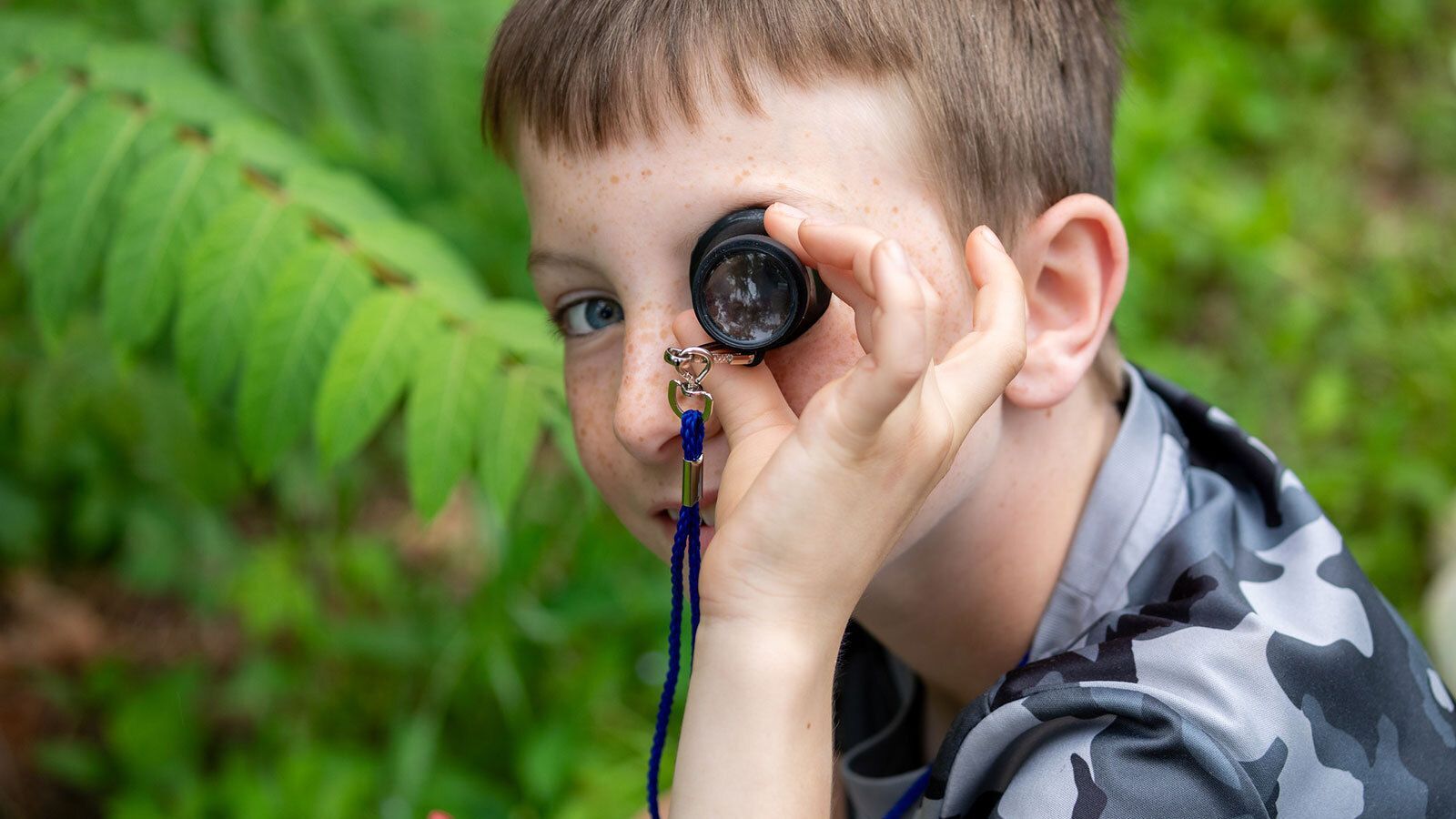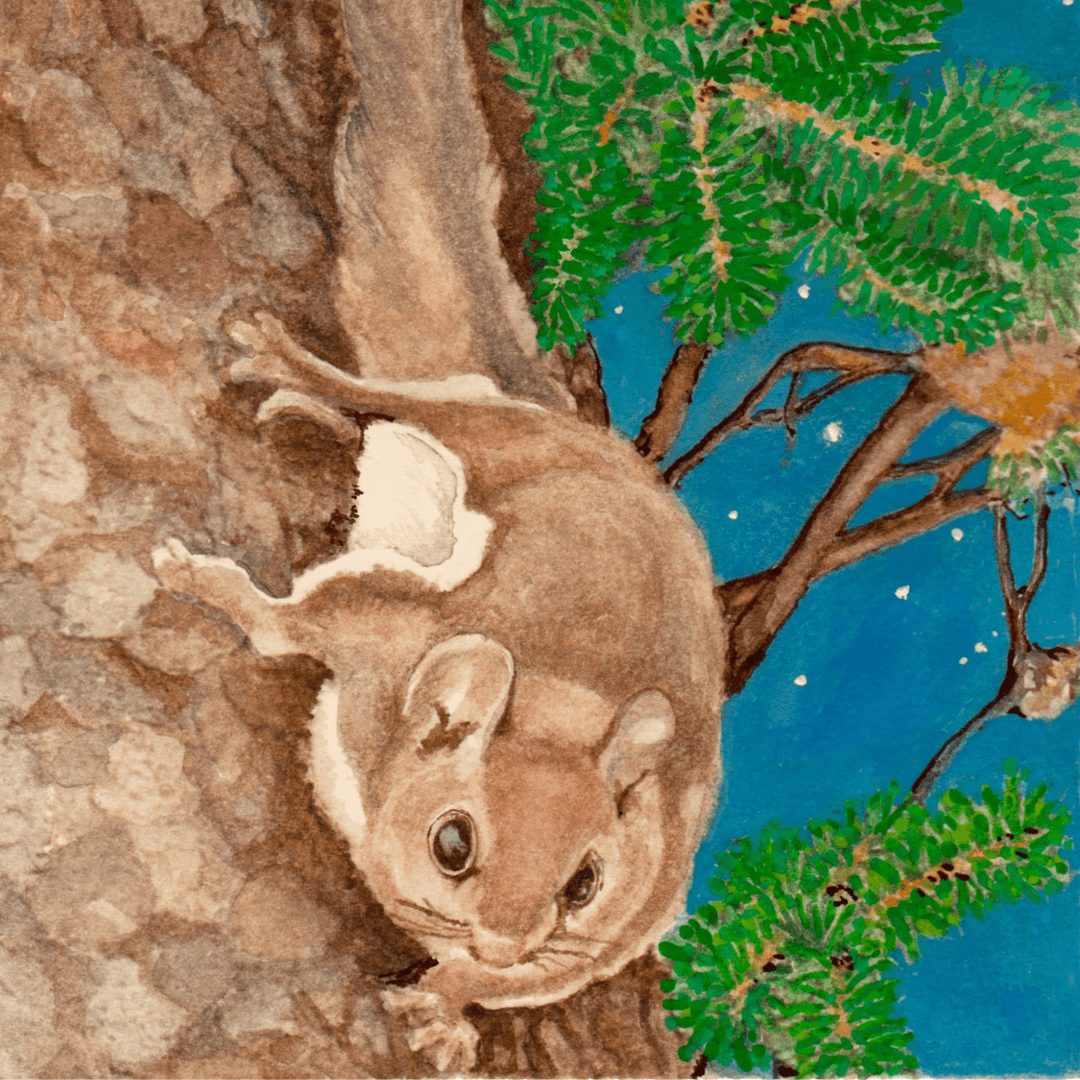Flying squirrels are one of the coolest looking animals on the planet. But they are completely misunderstood. Why is that? Well, let’s find out.
The Flying Squirrel’s Superpower
If you see something swooping overhead at night, it might not be a bat, but a flying squirrel. But are they actually flying? Nope, they are gliding from tree to tree, using a patagium. What does that mean?
All flying squirrels have a membrane made of fur that stretches from the wrist to the ankle and acts as a parachute when it leaps from a tree. Using the patagium and their tail, they are able to steer while gliding with flights recorded up to 300 feet.
Wow, that’s a long way! They can also rotate 180 degrees.
So what other animals have a patagium? Turns out, lots. Bats, flying lizards and even flying frogs all have patagia (that’s patagium in the plural).
A Rare Sight
These cute mammals have been around for 18-20 million years. But we rarely see them since they are nocturnal, meaning they mostly come out at night. This is one reason their eyes are so big- they need to be able to see in the dark while gliding and foraging.
An Underdog Species
Out of 45 species of flying squirrel around the world, we have 3 in North America: The northern, the southern & the Humboldt’s (located in the Northwest US). Here in North Carolina, it is most common to see the southern flying squirrel, but high in the mountains of Western North Carolina, you will find the Carolina northern flying squirrel, a subspecies of the northern flying squirrel. There are only 9 known populations in existence and they all live above an elevation of 4,500 feet. Not only is it endangered but very elusive, or rare!
What Do They Eat?
So, what do these guys eat? Well, they love truffles and other fungi. They also eat mushrooms, bird eggs, insects and flowers, making them omnivorous (meaning they eat plants & animals).
Plus, they eat lots of nuts, especially during breeding season when the mothers need additional nutrition. They can store up to 15,000 nuts in one season- wow!
Mysterious Poles
Have you ever seen poles like these? What in the world is the purpose of these poles? Champions for Wildlife founders Dale Weiler and Loti Woods wondered the same thing. There were 3 sets of 2 each spaced along the highway. Something having to do with snow? But what were the round, PVC tubes attached at intervals going up the poles?
Curiosity led them to ask their innkeeper, Robert Rankin, at the Snowbird Mountain Lodge about the poles. He told them the story of the Cherohala Highway being built, a $100 million dollar project. Unfortunately, the road was so wide, the Carolina northern flying squirrels could not glide across it.
Something had to be done! So, a whole bunch of groups got together to come up with a solution, including The North Carolina Wildlife Resources Commission with the aid of North Carolina Department of Transportation, Duke Energy, U.S. Fish and Wildlife Service and the U.S. Forest Service.
They constructed poles to act as landing and launching spots for the squirrels to use in crossing the highway. And they seem to be working! The PVC tubes are for hiding from predators while the flying squirrels are up on the poles.
Other Cool Flying Squirrel Facts
Flying squirrels have lots of predators, like owls, raccoons, and snakes, so they have to be extra careful! They build their nests high up in trees to stay safe. Baby flying squirrels are born without any fur and stay with their mom for a few months. During this time, they nurse and grow until they are ready to leave the nest at about four months old.
In colder months, flying squirrels like to stay warm by piling into one nest together—imagine a big, furry squirrel sleepover! But here’s the coolest fact: flying squirrels glow in the dark! At night, they shine with a pink glow. If you ever see a pink light gliding through the sky, it might just be a flying squirrel. They’re also amazing gliders—they can turn completely around in the air, doing a 180-degree spin. How incredible is that?
Become A Flying Squirrel Advocate
How can you help these cute squirrels, especially the endangered Carolina northern flying squirrel? Learn more about them, and then create art to teach others about them!
The Carolina northern flying squirrel feeds on fungus living at the base of conifers at high elevations. Unfortunately, many of the trees (hemlocks, Fraser firs & red spruce trees) have been decimated from non-native pests and climate change.Several groups have partnered to plant new spruce trees in the squirrel’s habitat with over 4,000 planted to date. Support or partner with groups planting trees!


